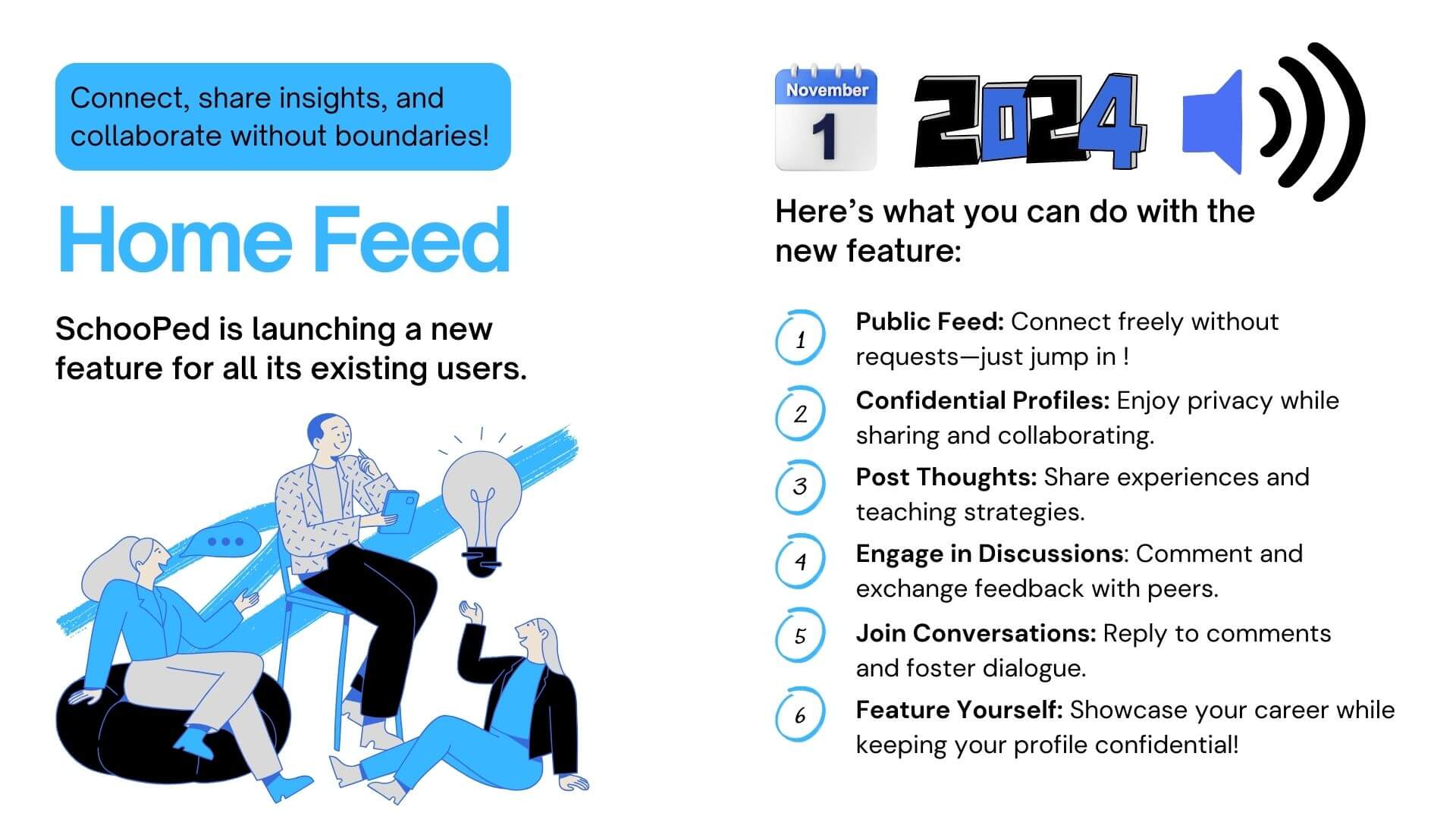
 July 17, 2024 | Posted by Team SchooPed
July 17, 2024 | Posted by Team SchooPed_(1).png)
In the realm of education, the journey of professional growth is intricately intertwined with the feedback received from students. This feedback serves not only as a gauge of teaching effectiveness but also as a powerful catalyst for personal and professional development. By actively seeking, analyzing, and implementing student feedback, educators can cultivate a more enriching learning environment, improve instructional strategies, and ultimately elevate their own professional journey.
Student feedback is a direct reflection of their learning experiences, perceptions, and expectations. It provides educators with invaluable insights into various aspects of their teaching effectiveness:
Insight into Teaching Effectiveness: Students' feedback offers a real-time assessment of how well teaching methods are resonating with them. It highlights what works and what needs improvement from the learners' perspective.
Identification of Strengths and Weaknesses: Honest feedback from students helps educators identify their strengths to leverage and weaknesses to address. This awareness forms the foundation for targeted professional development.
Enhanced Student Engagement: Engaging students in the feedback process fosters a sense of ownership and responsibility for their learning journey. It encourages them to actively reflect on their own progress and contribute constructively to the learning environment.
To harness the full potential of student feedback, educators can adopt structured approaches to solicit and utilize it effectively:
Create Safe and Trusting Spaces: Establish an open and non-judgmental environment where students feel comfortable expressing their opinions. This could involve anonymous surveys, one-on-one discussions, or group feedback sessions.
Use Diverse Feedback Channels: Employ a variety of feedback mechanisms such as online surveys, peer evaluations, classroom discussions, and digital platforms. This ensures inclusivity and captures a wide range of perspectives.
Ask Specific and Actionable Questions: Frame questions that are clear, specific, and relevant to teaching objectives. Focus on aspects like clarity of instruction, engagement techniques, assessment fairness, and support availability.
Regular and Timely Feedback Cycles: Implement regular intervals for feedback collection to capture ongoing trends and adjust strategies promptly. Timely feedback ensures that adjustments can be made while the course or semester is ongoing.
Once feedback is gathered, the next crucial step is to effectively analyze and apply it to foster continuous improvement:
Reflective Practice: Engage in reflective practice by critically analyzing the feedback received. Identify recurring themes, patterns, and areas for improvement based on both quantitative data and qualitative insights.
Set SMART Goals: Based on the feedback analysis, set Specific, Measurable, Achievable, Relevant, and Time-bound (SMART) goals for professional development. These goals should target areas identified for improvement.
Seek Peer Collaboration and Mentorship: Collaborate with peers or mentors to gain additional perspectives on the feedback received. Peer observations and constructive dialogue can offer fresh insights and alternative strategies.
Implement Iterative Changes: Implement incremental changes in teaching practices based on feedback insights. Monitor the impact of these changes and iterate as necessary to optimize learning outcomes.
The integration of student feedback into professional growth initiatives yields numerous benefits that extend beyond the individual educator:
Improved Teaching Effectiveness: Adjustments informed by feedback enhance teaching strategies, making lessons more engaging, comprehensible, and aligned with student needs.
Enhanced Student Learning Outcomes: A responsive approach to feedback cultivates a dynamic learning environment that supports diverse learning styles and fosters academic success.
Positive Classroom Culture: Valuing student feedback promotes mutual respect and collaboration between educators and learners. It nurtures a culture of continuous improvement and shared accountability.
Embracing student feedback is more than a strategic approach; it is a commitment to continuous improvement and excellence in education. By leveraging feedback to refine teaching methods, educators can create dynamic learning environments that cater to diverse student needs and enhance overall learning outcomes.
As you embark on your journey towards professional growth, consider exploring teaching opportunities in vibrant educational landscapes like Thailand, China, Vietnam, and India. These countries offer rich cultural experiences and diverse teaching environments that can enrich your career and broaden your horizons.
If you're ready to take the next step in your teaching career, SchooPed provides a gateway to explore and apply for your dream teaching job abroad. Whether you aspire to teach English, STEM subjects, or specialized fields, SchooPed connects educators with rewarding opportunities in esteemed educational institutions across Asia.
Join www.schooped.com today to discover exciting teaching vacancies, connect with international schools, and embark on a fulfilling teaching adventure that aligns with your professional goals. Let student feedback guide your journey towards becoming an educator who not only inspires but also evolves with every classroom experience.
Sign Up and unlock your potential in the global education landscape! Your dream teaching job awaits.